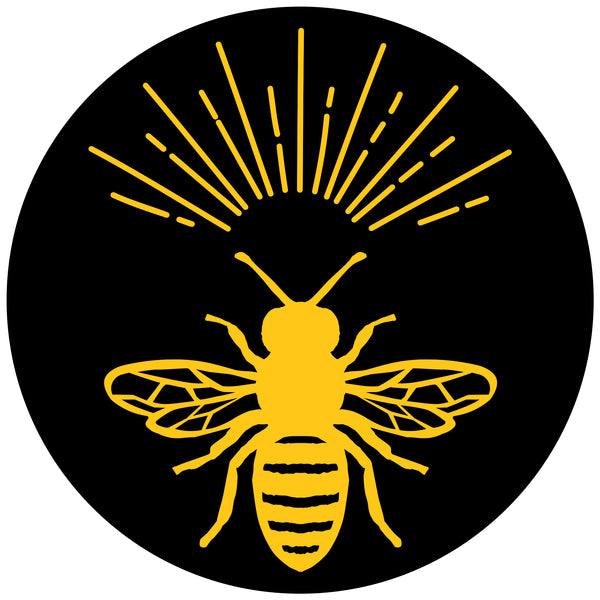Bee pollen is often celebrated as a superfood, packed with essential nutrients and health benefits. But beyond its nutritional profile, many people wonder about its taste and texture. What can you expect when you try bee pollen for the first time? Let’s dive into the delightful sensory experience that this natural product offers.

Nature's Golden Granules
Bee pollen is not just one flavour; it’s a complex blend influenced by the variety of flowers from which it is harvested. Each granule can contain pollen from dozens of different plants, resulting in a unique taste profile that can vary significantly based on several factors, including the time of year and the geographical location of the hives.
Flavour Profile
- Floral Notes: The predominant flavour of bee pollen is often described as floral, reflecting the diverse sources of nectar that bees collect. This floral sweetness can range from mild to more pronounced, depending on the specific flowers involved.
- Earthy Undertones: Many people note an earthy quality to bee pollen, which adds depth to its sweetness. This earthiness can be more prominent in certain batches, giving it a rich, wholesome flavour.
- Soft Sweetness: Generally, bee pollen has a soft sweetness that isn’t overpowering, making it an excellent addition to various dishes without overwhelming other flavours.
- Bitterness: Interestingly, some reports indicate that bee pollen can take on a slightly bitter taste depending on the time of year or specific floral sources. This bitterness may be more noticeable in certain batches or types of pollen.
The Distinctive Flavour and Texture of Western Australian Bee Pollen
Bee pollen from Western Australia is gaining cult status among superfood lovers and culinary enthusiasts. Hand-harvested by local beekeepers from native forests and wild meadows, Western Australian bee pollen stands out for its remarkable purity, diverse floral sources, and nuanced sensory experience. But what exactly makes its flavour and texture so special?

A Taste That Reflects Ancient Forests
Thanks to the bee-friendly landscapes of Western Australia, where bees forage among Jarrah, Marri, Redgum, and other unique native blossoms, bee pollen from the region has a taste profile all its own.
- Subtle Sweetness: Western Australian bee pollen is known for its mild sweetness, balanced rather than overpowering. The natural sugars provide a gentle lift, making it palatable both by the spoonful and as a scattered topping.
- Nutty and Earthy Notes: Beyond sweetness, there is a sophisticated blend of nutty and earthy undertones, echoing the wild forests and rich soils where bees gather their pollen.
- Delicate Floral Undertones: Hints of honeyed flowers come through, with the exact floral notes shifting based on the season and dominant local nectar sources. Sometimes, one can detect Marri’s light crispness or Jarrah’s deeper, more complex notes.
- Pleasant Bitterness: Some batches offer a mild, intriguing bitterness or a touch of tang, especially from certain tree species or wildflower blends. This complexity appeals to adventurous palates used to dark chocolate or strong tea.
 A Honeybee collecting pollen from a Eucalypt flower
A Honeybee collecting pollen from a Eucalypt flower
Texture: Crunchy, Fresh, and Satisfying
Texture is a vital part of the Western Australian bee pollen experience.
- Granular Crunch: Each tiny bead is slightly crunchy, breaking apart quickly in the mouth without becoming gritty.
- Popping Freshness: High-quality pollen from Western Australia is often described as fresh and crisp, never stale or dusty, thanks to careful harvesting and minimal processing.
- Melts Gently: As the granules dissolve, they release their natural sweetness and floral flavours smoothly, leaving a clean finish on the palate.

Ways to Enjoy
Try Western Australia bee pollen:
- On yogurt, smoothie bowls, oatmeal, or toast for a gentle crunch and fragrant boost.
- As a topping for raw treats, muesli, or salads.
- In Baked Goods: Incorporate bee pollen into muffins or energy bars for a delightful twist.
- Dissolve a spoonful in your favourite tea for a touch of sweetness.
- Add a generous sprinkle to a fresh salad for a delightful crunch.
- Straight from the spoon for the purest taste adventure, gradually increasing the daily amount to suit individual preference.

Bee pollen is not just a health supplement; it's an experience for your senses. Its complex flavour profile, from floral sweetness to earthy undertones, combined with its unique textures makes it a versatile addition to any diet. Whether you're looking to enhance your meals or simply enjoy it on its own, bee pollen offers a delightful way to nourish your body naturally.
Western Australian bee pollen is more than a nutritious supplement, it’s an experience of place, capturing the wild beauty, rarity, and diverse botanic legacy of its native forests in every spoonful.
References
Manning, R. (2008). Pollen from Western Australia at a glance. Department of Primary Industries and Regional Development, Western Australia, Perth. Bulletin 4748. ISSN 1833-7236. https://library.dpird.wa.gov.au/bulletins/91
Lawag, I.L., et al. (2021). Optimisation of bee pollen extraction to maximise antioxidant principles: A case study on jarrah and marri bee pollen from Western Australia. Journal of Food Measurement and Characterization, 15, 3563–3577. https://pubmed.ncbi.nlm.nih.gov/34356345/
Bell, R.R. (1983). Composition and protein quality of honeybee-collected pollens from Western Australia: Jarrah (Eucalyptus marginata) and Marri (Corymbia calophylla). Journal of Nutritional Science and Vitaminology, 29(4), 447–466. https://www.sciencedirect.com/science/article/abs/pii/S0022316623257004

